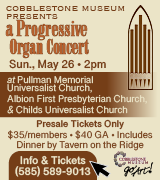Understanding the importance of Subacute Rehab: Bridging the gap in recovery

Randi Ingersoll
By Randi Ingersoll, social worker at Orleans Community Health
Subacute rehabilitation plays a crucial role in the continuum of care for individuals recovering from surgery or injury. This specialized form of rehabilitation serves as a vital bridge between acute care and a return to normal daily activities. We’re often asked to define sub-acute rehab and explain its importance.
What is Subacute Rehab?
Subacute rehab is a level of care that falls between acute hospital care and traditional outpatient rehabilitation. It is designed for patients who no longer require intensive medical monitoring but still need comprehensive rehabilitation services to regain optimal functioning. These rehab units may occasionally have specific names, such as Medina Memorial Hospital’s Transitional Care Unit (TCU) is where subacute rehab patients can take this step toward getting back on their feet.
Here is some additional information that is helpful to know about subacute rehab:
• It consists of inpatient care that lasts for 1-3 weeks and can include several therapies throughout the day (occupational, physical and/or speech therapy).
• Skilled nursing services such as long term IV antibiotic administration is considered subacute rehab.
• Some subacute rehab locations offer benefits to patients like private rooms and 24-hour RN coverage for nursing care
• Subacute rehab can occur in hospital settings (such as Medina Memorial Hospital) or locations outside of a
hospital setting.
• Overall, the goal is to get the patient back to the physical function they were at prior to the injury, illness or surgery that led them to needing subacute rehab.
Finding the Location that Best Fits You
“I knew I needed a knee replacement, actually both knees needed to be done.” – Phyllis MacKay of Middleport NY
Finding the location that best fits you is a critical piece of your recovery. Spending 1-3 weeks away from home may be burdensome, so finding a place that makes you comfortable is a priority. While you can wait until you receive recommendations from a discharge planner, you can also do personal research on subacute rehab facilities/units that you believe are good fits. Medina Memorial Hospital’s TCU and other locations offer tours that help make this decision.
Key Features to know about Subacute Rehab Care
Comprehensive Care Tailored to Individual Needs
One of the key features of subacute rehab is its individualized approach to care. Each patient receives a personalized treatment plan that addresses their specific medical condition, functional abilities, and rehabilitation goals. This tailored approach ensures that patients receive the right level of support to regain independence in activities of daily living.
Multidisciplinary Team Collaboration
Subacute rehab involves a multidisciplinary team of healthcare professionals working collaboratively to meet the diverse needs of patients. This team may include physical therapists, occupational therapists, speech-language pathologists, nurses, and other specialists. The coordinated efforts of these professionals help address the physical, cognitive, and emotional aspects of recovery.
Intensive Rehabilitation Services
Patients in subacute rehab participate in intensive rehabilitation services that focus on improving mobility, strength, coordination, and overall function. Therapists employ techniques and exercises to enhance a patient’s ability to perform daily tasks independently. This may include mobility training, balance exercises, adaptive equipment training, and other interventions tailored to the patient’s condition.
Transitioning to Independence
The primary goal of subacute rehab is to prepare individuals for a successful return to their homes and communities. Through targeted therapy and support, patients gain the skills and confidence needed to manage their health independently. This transition to independence not only improves the quality of life for patients but also reduces the likelihood of re-hospitalization.
Monitoring and Managing Medical Conditions
While the acute phase of an illness or injury may have passed, individuals in subacute rehab may still have ongoing medical needs. The healthcare team in this setting is equipped to monitor and manage these conditions, ensuring a smooth recovery process. This comprehensive approach to care addresses not only rehabilitation but also the overall well-being of the patient.
Getting You Back on Your Feet
In conclusion, subacute rehab serves as a crucial step in the healing journey for individuals recovering from illness, surgery, or injury. Its individualized approach, intensive rehabilitation services, and focus on transitioning to independence contribute to improved outcomes and reduced healthcare costs. By understanding the importance of subacute rehab, we can appreciate its role in enhancing the overall quality of care and supporting individuals on their path to recovery.










































































